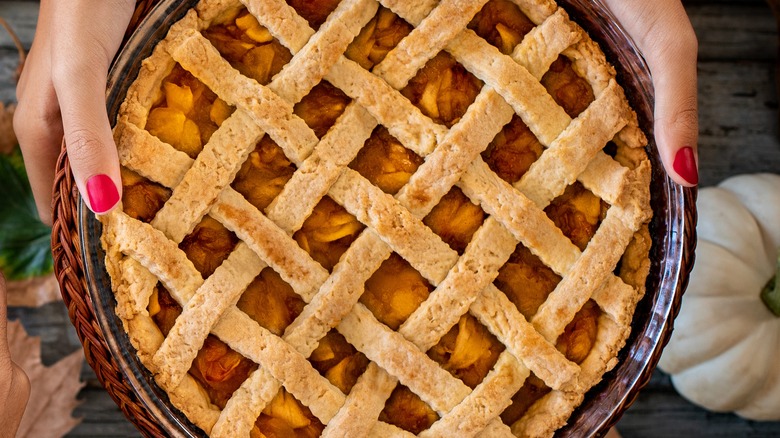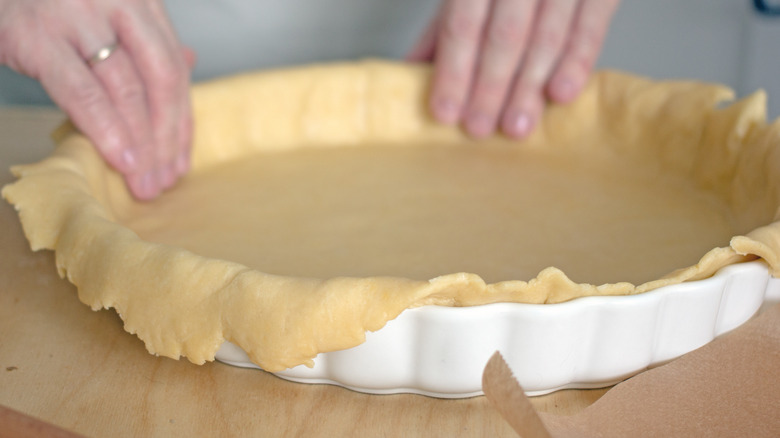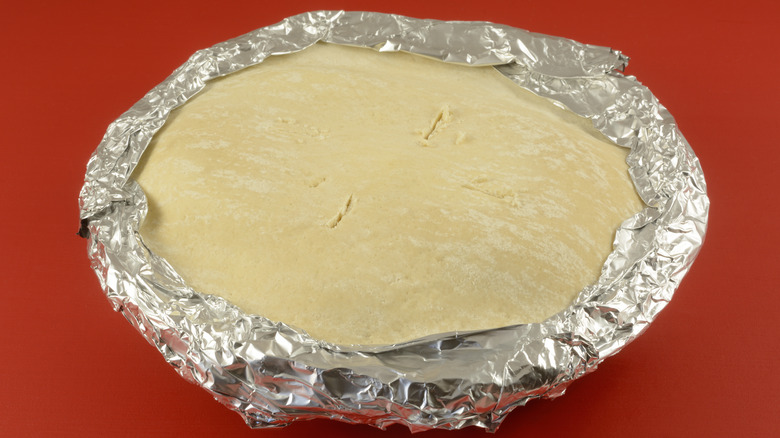The Real Reason Your Pie Crust Keeps Burning
There are few things as intoxicating as the smell of a homemade pie baking away, especially during the holiday season. The toasty scent of the buttery crust is almost better than actually digging in. But baking a pie from scratch can be tricky. There's the risk of a filling that is curdled or too liquid, and the threat of the crust being too wet or too crumbly. There's a lot of margin for error (via Eating Well).
One of the most disappointing mishaps is a burnt outer crust with an underdone, or even raw, top and bottom crust. Even on a par-baked crust for cream-filled or no-bake pies, the crust on the bottom can still take a lot longer to cook than the edges. As Food52's resident baker and all-around pie rockstar Erin Jeanne McDowell suggests, baking your pie in a glass pie plate can help you more closely monitor the browning of the bottom of the crust to make sure to catch any potential burning or under-baking before it's too late.
Dough overhang, fat, and sugar can all contribute to burning
There are a few factors at play contributing to potential crust burn, and the most likely culprit depends on what type of pie you're baking. As Lauren Klien reports in her blog post for Hamilton Beach, crust burning is a common problem because the crust always browns faster than the rest of the pie. According to King Arthur Baking Company, this can be especially common in a fruit pie because it takes a long time to bring the filling to a boil and, "the ideal duration for a fruit filling to bake isn't necessarily ideal for the crust as well. As a result, the edges of a pie crust might zoom right past golden brown and straight to burned."
This discrepancy in cook time and temperature is a likely reason your pie might come out looking a little more on the "well-done" side around the edges. Things like fruit filling or even a classic pecan pie contain a lot of sugar which has a high capacity for burning, especially compounded with the high amount of butter or fat in a traditional shortcrust pastry. Finally, another issue you could face is excessive overhang; thin and uninsulated crust exposed to the oven's high heat can burn quickly (via Delish).
Some type of crust shield can prevent burning
Thankfully, all is not lost. There's actually a really simple trick to avoid crust burning without changing your recipe. The answer is a type of crust shield. There are commercially available silicone models from retailers like King Arthur Baking Company, but if you don't happen to have a commercial one on hand, it's easy to make one out of aluminum foil.
A few strips pressed around the crust is the easiest way, but A Taste of Home published an ingenious method of cutting a circle of foil larger than the pie plate by folding "like if you were making paper snowflakes" and then cutting the point off to make a ring. This totally circumvents the dreaded scrunching of strips of foil onto a piping hot pie plate. In a pinch, if you don't have a commercial or foil crust shield, Delish suggests folding the crust over and crimping, writing, "This double layer creates a stronger crust that won't bake too quickly and will better hold up in the heat of the oven to hold its shape."


